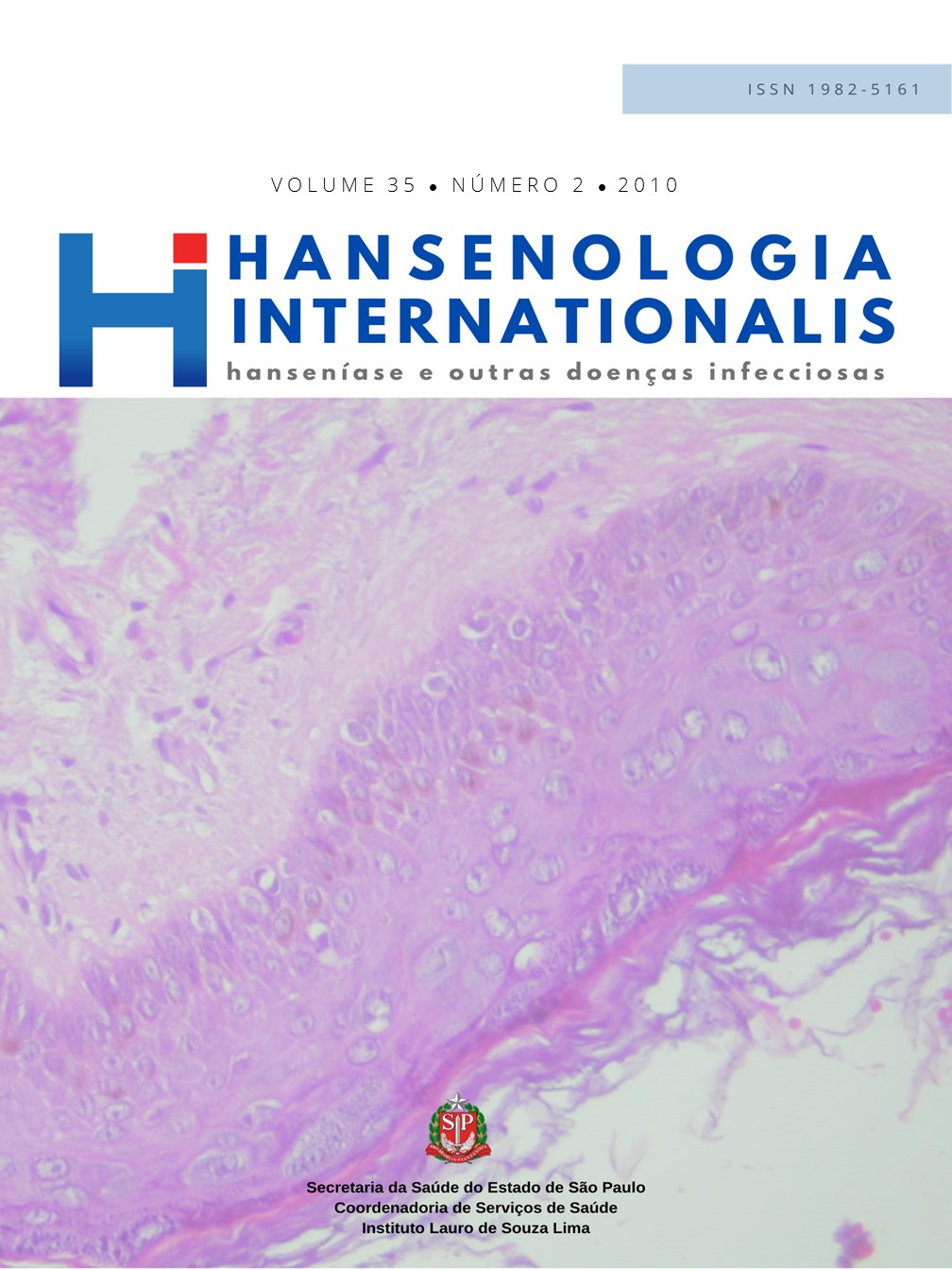Abstract
This study has the objective of traces the profile of the leprosy patient in the State of Paraíba. It is resulted of an epidemic study of the type observational, tranverse and of individual base, being used the quantitative method. From 223 municipal districts of Paraíba, we have chosen as inclusion criteria those who demonstrated the higher leprosy incidence. A sample of 6.7% was used. The chosen variables were the same of the card notification of SINAN. A document has been done with closed questions and pre-conditioned answers for the collection of data that were processed by the Program Statistical Package for Social Science. This profile shows that: women get sick of leprosy more than men; there isa predominance of non-alphabetized, with almost 50% of the cards analyzed; more than 50% of the population is in the age group of 25-60 years old; there is a predominance of unknown race/color cases, what means that, the service is not properly considering the data registered; there is no significant differences between paucibacillary and multibacillary cases. In spite of paucibacillary clinical form present a larger number of cases, it did not reveal significant divergences in relation to multibacillary forms. The data revealed that there is no representation in the State concerning the number of lesions, because there are two systems of information; 41.4% of the cases has shown negative bacilloscopy results; in Campina Grande, João Pessoa and Cajazeiras the incidence are bigger.
References
2 MOREIRA, M.V.; WALDMAN, E.A.; MARTINS, C.L. Hanseníase no Estado do Espírito Santo, Brasil: uma endemia em ascensão? Cad. Saúde Pública, Rio de Janeiro, v. 24, n. 7, p. 1619-1630, jul, 2008.
3 BRASIL. Ministério da Saúde. Secretaria de Vigilância em Saúde. Hanseníase. In: Guia de vigilância epidemiológica / Ministério da Saúde, Secretaria de Vigilância em Saúde. – 6. ed. – Brasília :Ministério da Saúde, 2005. p. 364. – (Série A. Normas e Manuais Técnicos).
4 SILVA, G.M.; PATROCINIO, L.G.; GOULART, I.M.B. Avaliação Otorrinolaringológica na Hanseníase Protocolo de um Centro de Referência. Arq. Int. Otorrinolaringol, São Paulo, v.12, n.1, p. 77-81, 2008.
5 VIEIRA, C.S.C.A.; SOARES, M.T.; RIBEIRO, C.T.S.X.; SILVA, L.F.G. Avaliação e controle de contatos faltosos de doentes com Hanseníase. Rev Bras Enferm, Brasília v. 61. n. esp., p. 682-688. 2008.
6 OMS, Organização Mundial da Saúde. Estratégia Global para aliviar a carga da hanseníase e manter as atividades de controle da hanseníase, Plano: 2006-2010, Geneva, 2005.
7 BRASIL. Ministério da Saúde. Secretaria de Vigilância em Saúde. Plano Nacional de Eliminação da Hanseníase. IV Carta de Eliminação da Hanseníase, Paraíba – 2005. Disponível em: <http://portal.saude.gov.br/portal/arquivos/pdf/paraiba4.pdf>. Acesso em: 13 jan. 2010.
8 LAKATOS, E.M.; MARCONI, M.A. Fundamentos da Metodologia Científica. 6. ed. São Paulo: Atlas, 2006. 315p.
9 QUEIROZ, M.S.; PUNTEL, M.A. A endemia hansênica: uma perspectiva multidisciplinar. 20. ed. Rio de Janeiro: FIOCRUZ, 1997.
10 BRASIL. % Alfabetização por Sexo Segundo Alfabetização Período 2000. DATASUS. Disponível em: <http://tabnet.datasus.gov.br/cgi/tabcgi.exe?ibge/cnv/alfpb.def.> Acesso em: 16 dez. 2003.
11 MORENO, C.M.C.; ENDERS, B.C.; SIMPSON, C.A. Avaliação das capacitações de Hanseníase: opinião de médicos e enfermeiros das equipes de saúde da família. Rev Bras Enferm, Brasília, vol. 61, n. esp., p. 671-675. 2008.

This work is licensed under a Creative Commons Attribution 4.0 International License.
